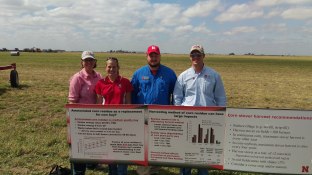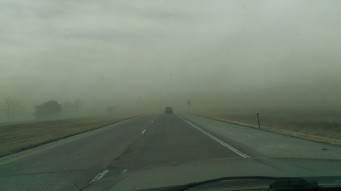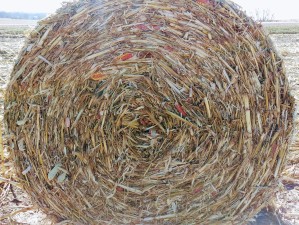Upcoming events:
Nov. 26: Landlord/Tenant Workshop, (Reg. 9:15) Program 9:30 a.m.-3 p.m., 4-H Bldg Fairgrounds, Broken Bow, 308-872-6831
Nov. 27: Farmers/Ranchers College:“Agricultural Update & the Road Ahead” featuring Dr. David Kohl, 1-4 p.m., Opera House, Bruning. RSVP: (402) 759-3712
Dec. 3: Landlord/Tenant Workshop, (Reg. 9:15) Program 9:30 a.m.-3 p.m., Divots Convention Center, Norfolk, 402-370-4040
Dec. 6: Prescribed Burning Workshop, Holiday Inn, Kearney, www.nefirecouncil.org
Dec. 6: TAPS Banquet, 5-7 p.m., North Platte
Dec. 10-11: Growth and Risk Workshops, North Platte, RSVP & Info: 308-696-6734
Dec. 12-13: Growth & Risk Workshops, Norfolk, RSVP & Info: 308-696-6734
Dec. 12: UBBNRD Project Grow Workshop, 9 a.m.-3 p.m., Holthus Convention Center, York, RSVP 402-362-6601
Dec. 12: Landlord/Tenant Workshop, (Reg. 9:15) Program 9:30 a.m.-3 p.m., Harlan Co. Extension Office, Alma, 308-928-2119
Dec. 13: Nebraska Soybean Day and Machinery Expo, 8:30 a.m.-2:30 p.m., Saunders Co. Fairgrounds, Wahoo
Dec. 14: Landlord/Tenant Workshop, (Reg. 9:15) Program 9:30 a.m.-3 p.m., Dawson Co. Extension Office, Lexington, 308-324-
Dec. 17: Crop Science Investigation (CSI): Ag Industry Tour, 5-6 p.m. RSVP jrees2@unl.edu
Dec. 19: Landlord/Tenant Workshop, (Reg. 9:15) Program 9:30 a.m.-3 p.m., Gage Co. Extension Office, Beatrice, 402-233-1384
Dec. 20: Landlord/Tenant Workshop, (Reg. 9:15) Program 9:30 a.m.-3 p.m., Adams Co. Faigrounds, Hastings, 402-461-7209.
With harvest finished or wrapping up, focus has shifted to anhydrous applications and managing residue. Corn residue management has been a topic of discussion for years. Research on this topic has included use of tillage, baling, grazing, and use of products like nitrogen.
Iowa State conducted a three year study evaluating the effects of conventional tillage, no-till, and strip-till on residue breakdown on Bt and non-Bt corn residues. They did this by placing bags of residue of Bt and non-Bt hybrids in the three different tillage systems and evaluated decomposition after 3, 6, 9, and 12 months in a corn/soy rotation. The results showed no significant difference between tillage systems or Bt and non-Bt hybrid decomposition. These researchers also studied the impact of nitrogen applications on corn residue breakdown over two years in no-till. Immediately after harvest, three N rates (UAN 32 percent) of 0, 30 and 60 lb N/acre were applied to corn residue. A specific amount of residue was placed in nylon mesh bags and left in the field for 3, 6, 9, and 12 months, after which residue decomposition was evaluated. The different rates of N resulted in no differences in rate of decomposition. In general, the longer the residue remained in the field, the more it decomposed over time, regardless of N rate. Thus the authors shared that applying N after harvest for residue decomposition was not effective nor economical as soil and air temperatures decreased over time after harvest. They shared that in general, decomposition of crop residue is primarily influenced by soil moisture and temperature which allow for microbial activity.
Last year I wrote a series of articles for my news column and shared them in CropWatch  regarding cornstalk baling. A team of Extension Specialists/Educators and USDA-ARS also worked together on a workshop at 2018 Husker Harvest Days on this topic. I’ve received various reactions to these efforts, but my desire is to present the research. My perspective is twofold:
regarding cornstalk baling. A team of Extension Specialists/Educators and USDA-ARS also worked together on a workshop at 2018 Husker Harvest Days on this topic. I’ve received various reactions to these efforts, but my desire is to present the research. My perspective is twofold:
- Better serving farmers/landowners in helping answer your residue management questions via the research available and
- With the high winds, dust storms and vehicle accidents last winter/early spring,

I took this photo Feb. 2018 on I-80.
could we potentially rethink residue management besides so much conventional tillage for this part of the State?
I’m not saying conventional tillage doesn’t have a place, especially as we think of one-time burial of weed seed. I just wonder if we can help reduce soil loss by utilizing other methods of residue management, perhaps including increased use of livestock grazing and cornstalk baling under the right field situations?
Summarizing the research, cornstalk baling is not for every piece of ground or every  situation. From the research, our recommendations are that baling of corn residue should only occur on ground with less than 5% slope that yields 180 bu/ac or more, harvesting no more than 2 tons/acre. Retaining at least 2.4 tons of residue allowed for soil carbon maintenance and retaining more residue also reduced erosion. Every 40 bu/ac of corn results in 1 ton of residue at 10% moisture. Baling on fields fitting the above-mentioned criteria should occur a maximum of every other year in continuous corn or once every four years in a corn/soy rotation (due to reduced residue already present after soybean harvest). The research showed no significant impact on soil properties or soil carbon following those guidelines. Other recommendations would be to use a reduced tillage system in the field where baling occurred and consider planting a cover crop and/or adding manure.
situation. From the research, our recommendations are that baling of corn residue should only occur on ground with less than 5% slope that yields 180 bu/ac or more, harvesting no more than 2 tons/acre. Retaining at least 2.4 tons of residue allowed for soil carbon maintenance and retaining more residue also reduced erosion. Every 40 bu/ac of corn results in 1 ton of residue at 10% moisture. Baling on fields fitting the above-mentioned criteria should occur a maximum of every other year in continuous corn or once every four years in a corn/soy rotation (due to reduced residue already present after soybean harvest). The research showed no significant impact on soil properties or soil carbon following those guidelines. Other recommendations would be to use a reduced tillage system in the field where baling occurred and consider planting a cover crop and/or adding manure.
In 239 site-years across 36 studies, corn residue baling resulted in 3% average yield increase where moisture was not limited, most likely due to more uniform stands. The average nutrients found in 1 ton of corn or sorghum residue was 17 lbs of Nitrogen, 4 lbs of P2O5, 3 lbs of Sulfur, 34 lbs of K2O (which due to Nebraska soils being high in K, the value may be 0-50% of this depending on soil test results), and cations equivalent to 30 lbs of lime. There’s also research that suggests less nitrogen is needed the following year going into corn due to the change in the C:N ratio and increased mineralization. So corn residue baling, based on the research, can be an effective way of managing residue without significantly impacting soil properties if done using the considerations mentioned above. Many fields I’ve observed cornstalk baling in the area this year look good regarding these criteria and most took less than 50% residue off the fields.
This year we’ve also seen a large increase in soybean residue baling in this part of the State. I realize it’s mostly being used for livestock bedding. In a future column and CropWatch article, the research regarding soybean baling will be shared in addition to an economics comparison of various residue management strategies. I will also share on grazing research for residue management in a future column.


































